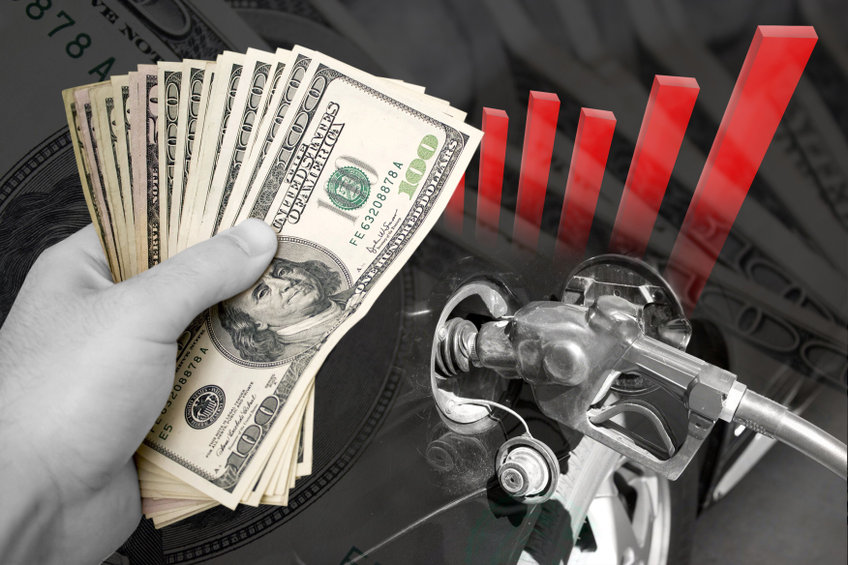
Biden’s petroleum embargo: Back to the 70’s
By Dave Juday
After a recent meeting at the White House, the U.S. oil and gas industry are rightly worried that the Biden Administration has a plan to ban exports of refined petroleum products, i.e., gasoline, diesel and heating oil, in its play book to address gasoline and energy inflation. The President’s Energy Secretary, Jennifer Granholm, says the Administration “refuses to rule out limitations on exports.”
Such an embargo should absolutely be ruled out. It would be a colossal blunder, on a par with the 1980 Carter grain embargo which devastated the U.S. agricultural economy.
Indeed, trying to manage the domestic supply of a globally traded commodity only results in unintended consequences. Consider, for 40 years, from 1975 through 2015, the U.S. banned exports of crude oil in an attempt to ensure a stable and sufficient domestic supply of energy. It was one of the many policy prescriptions of the mid- and late 1970’s designed to make the U.S. more energy self-reliant, ranging from gas rationing to price controls, to lowered speed limits on the interstate.
During that time, new energy production incentives were put in place, too. But implemented under the shadow of the export restrictions, all those incentives accomplished was to add volatility to domestic crude oil prices, which in turn lead to dwindling U.S. supplies. After a brief and very modest increase in domestic output, crude oil production went on a more than two-decade skid. In fact, total petroleum production in the U.S. in 2010 was 35 percent less than in 1975. Not surprisingly, as a result, the U.S. became ever more reliant on imported crude oil.
Now, with inflationary pressures, the war in Ukraine, and various production disincentives – from shuttering pipelines to tying up federal leases in red tape, not to mention a constant drum beat of rhetoric from the Administration about moving beyond oil dissuading any rational economic actor from want to invest in future production – oil prices peaked after the Russian invasion of Ukraine to $115/barrel, before dropping to an average of $89/barrel in September 2022.
Note, this year’s peak was not the record. The highest price was in June of 2008 at $138/barrel. The average price of oil from 2011 through 2014 was more than $107/barrel. However, when the export ban on U.S. crude oil was lifted in 2016, prices dropped. In fact, from 2016 through the end of 2109, daily Brent Crude prices averaged $59/barrel.
After being freed to respond to global market signals beginning in 2016, the U.S. emerged last year as the world’s largest petroleum producer. The weekly average price of a gallon of gasoline went from a four-year average of $3.16 during 2012-2015, to a weekly average of $2.38 between 2016 and 2019. It bears repeating; as exports increased, domestic prices decreased. And so did imports of foreign crude oil as the U.S. industry expanded oil production.
Advocates of restricting exports like to argue that blocking exports increases the domestic supply; it doesn’t. They’re looking at the wrong side of the equation. Rather, reducing exports through embargoes effectively reduces the global supply by shorting the market and reduces domestic production by limiting demand. It’s not just prices that react to changes in demand, it’s production too.
Reducing production has been OPEC’s move over the years, and just recently when OPEC-plus Russia agreed to implement a 2-million barrel-per-day cut in supply. Reducing supply to increase production is fine for countries that are big producers but don’t have much domestic demand. For the U.S., however, which is a major producer and consumer of energy, balancing export and domestic demand helps stabilize supply for both.
Consider how the production incentives work; a barrel of crude oil is refined into various products such as gasoline, diesel, or heating oil. According to the U.S. Department of Energy’s Energy Information Administration, a 42 gallon of crude oil makes about 20 gallons of gasoline, 12.5 gallons of distillate fuels such as diesel and heating oil, 3.5 gallons of jet fuel and 6.3 gallons of other fuels. Each product has its own market demands. There is a reason why more gasoline is made during the summer when families vacation and take weekend driving trips. Likewise, there is a reason why more heating oil is supplied in the winter. Globally, countries vary on their demand for heating fuel versus motor fuel versus other products. The key to balancing supply with demand is allowing a barrel of oil and the products it yields to flow to their best use. Maximizing the total value of a barrel of oil is an incentive to produce efficiently and supply both domestic and international markets.
The best way to tame high fuel and energy prices is to let supply grow to meet demand. Inherently, the Administration understands this, otherwise they wouldn’t have scheduled the release of 290 million barrels of oil from the Strategic Petroleum Reserve (SPR) starting in November 2021. The SPR is meant for energy emergencies, not to manipulate prices, but nonetheless, targeting prices has been the operating policy for the last year. Ostensibly, the Administration further understands the global nature of the petroleum market. That’s why the SPR releases were coordinated with other nation’s liquidating portions of their strategic reserves, such as Japan, Korea, the U.K., India and even China, and why some of the U.S. oil released from the SPR was exported. The Administration should connect those dots and drop any further consideration of imposing an export embargo on refined products.
From cfact.org